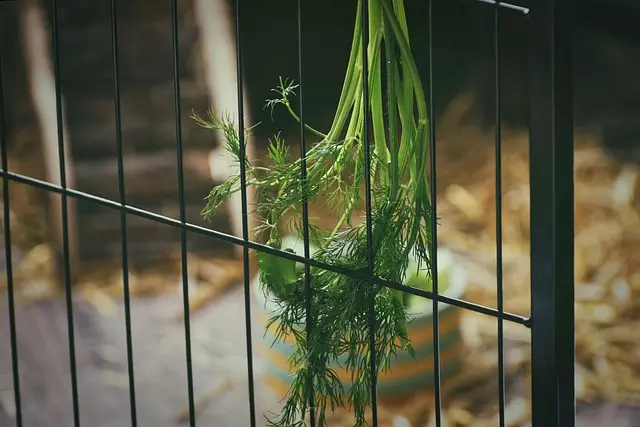Green and Red Maeng Da kratom strains have garnered attention for their potential roles in addiction treatment. Green Maeng Da is noted for its energizing and mood-enhancing effects that can aid in managing withdrawal symptoms without causing sedation, which might be beneficial for individuals recovering from opioid dependency. Its stimulating qualities may support daily functioning during recovery. Conversely, Red Maeng Da is valued for its analgesic properties, helping to alleviate pain and induce relaxation, potentially reducing cravings and improving sleep quality. Its calming effects are also believed to ease psychological stress and anxiety, which can be particularly helpful during the challenging phase of withdrawal. Both strains contain key alkaloids that engage with opioid receptors, offering distinct benefits, but their use in addiction treatment should be carefully considered and supervised by healthcare professionals due to individual differences in response and the lack of comprehensive research. The comparison between Green and Red Maeng Da highlights their unique contributions to recovery and underscores the importance of personalized treatment plans for effective and safe addiction management.
Exploring the therapeutic role of Kratom, particularly Green and Red Maeng Da varieties, in addiction treatment and recovery offers a novel perspective on substance abuse rehabilitation. This article dissects the unique alkaloid profiles within these strains and examines their potential benefits in aiding recovery. Through a comparative analysis of Green and Red Maeng Da’s effectiveness, safety, and user experiences, we delve into how they might serve as alternative options in addiction treatment regimens. Understanding the nuances between these strains can provide valuable insights for those seeking to navigate the complex journey of recovery with the support of Kratom.
- Unraveling the Potential of Green Maeng Da and Red Maeng Da in Addiction Treatment and Recovery
- The Distinctive Alkaloid Profiles and Their Implications for Substance Abuse Rehabilitation
- Comparative Analysis: Effectiveness, Safety, and User Experiences with Green Maeng Da vs. Red Maeng Da in the Context of Addiction Treatment
Unraveling the Potential of Green Maeng Da and Red Maeng Da in Addiction Treatment and Recovery

Green Maeng Da and Red Maeng Da, two prominent strains of the mitragyna speciosa plant, commonly known as kratom, have garnered attention within the context of addiction treatment and recovery. Both strains possess distinct alkaloid profiles that may influence their potential therapeutic effects. Green Maeng Da is often noted for its energizing and uplifting properties, which can assist individuals in managing withdrawal symptoms associated with opioid addiction. Its ability to promote a sense of well-being without the sedative effects typically linked with opiates makes it a compelling alternative for those seeking to transition away from substance dependency.
In contrast, Red Maeng Da is celebrated for its analgesic and sedative qualities, which can be particularly beneficial in mitigating pain and inducing relaxation. This strain’s soothing effects might play a role in reducing cravings and helping with sleep disturbances often experienced during recovery from addiction. The anxiolytic properties of Red Maeng Da may also aid in alleviating the psychological stress that accompanies substance withdrawal. Both strains have been subject to various anecdotal reports and preliminary studies suggesting their potential efficacy in aiding addiction treatment and recovery. However, it is imperative to approach the use of kratom with caution, as it requires further scientific scrutiny to fully understand its mechanisms of action and to establish safe and effective dosing guidelines. Users are advised to consult healthcare professionals before integrating kratom into their recovery regimen, considering the complex interplay between kratom and individual physiological responses.
The Distinctive Alkaloid Profiles and Their Implications for Substance Abuse Rehabilitation

Kratom, a plant from Thailand’s Mitragyna speciosa tree, has garnered attention in the realm of addiction treatment and recovery due to its distinctive alkaloid profiles. These profiles include notable compounds such as 7-hydroxmitragynine and mitragynine, which are believed to play a significant role in Kratom’s effects on the body. Green Maeng Da and Red Maeng Da, two prevalent strains of Kratom, exhibit different alkaloid concentrations that may influence their potential for substance abuse rehabilitation. Green Maeng Da is characterized by a higher concentration of mitragynine, which can provide stimulating effects, making it a popular choice for individuals seeking to combat fatigue and increase cognitive focus. Conversely, Red Maeng Da contains a more abundant presence of 7-hydroxmitragynine, an alkaloid with opioid-like properties that may offer analgesic and sedative effects, potentially aiding in the management of withdrawal symptoms and stress relief during recovery.
The nuanced differences between these strains are not merely a matter of anecdotal reports; scientific research has begun to shed light on how each alkaloid might interact with the opioid receptors in the brain differently, which could have implications for those seeking alternatives to traditional opioids for pain management and recovery from substance abuse. The potential of Kratom’s alkaloids to offer both stimulant and sedative properties within the same plant suggests a promising avenue for tailored treatment approaches in addiction recovery. However, it is crucial for individuals considering Kratom as part of their recovery plan to consult with healthcare professionals, given the complexity of individual responses to Kratom and the necessity for medically supervised detoxification and rehabilitation programs.
Comparative Analysis: Effectiveness, Safety, and User Experiences with Green Maeng Da vs. Red Maeng Da in the Context of Addiction Treatment

Green and Red Maeng Da, two distinct strains of kratom, have been subjects of interest in the context of addiction treatment and recovery. Users and researchers alike have conducted comparative analyses to evaluate their effectiveness, safety profiles, and the experiences reported by individuals using these strains as part of their recovery journey. Green Maeng Da is renowned for its invigorating and uplifting effects, often cited for helping users manage withdrawal symptoms without the sedative qualities that can accompany Red Maeng Da. Users report that Green Maeng Da can promote a sense of well-being and energy, which may be beneficial in maintaining daily activities while undergoing addiction treatment. On the other hand, Red Maeng Da is known for its analgesic and relaxing properties, which can aid in alleviating pain and promoting relaxation, potentially easing the transition away from more potent opioids. The safety of both strains should be carefully considered; while they share kratom’s common alkaloids, including mitragynine and 7-hydroxymitragynine, their effects can differ significantly in intensity and duration. User experiences with Red Maeng Da often highlight its effectiveness in managing anxiety and depression, which are common challenges faced during recovery. Ultimately, the choice between Green and Red Maeng Da may hinge on individual user needs, preferences, and the specific symptoms they aim to address within their addiction treatment regimen. It is imperative for users to consult with healthcare professionals before incorporating any kratom strain into their treatment plan, ensuring a holistic approach to recovery that prioritizes safety and efficacy.
Green and Red Maeng Da kratom varieties present promising avenues for those seeking recovery from substance abuse. The unique alkaloid profiles of these strains, explored in the article, suggest a potential role in addiction treatment, with Green Maeng Da offering stimulating effects that may aid in replacing negative habits with constructive activities, and Red Maeng Da providing sedating properties that could support relaxation and sleep, crucial for healing. A comparative analysis indicates that both strains have their merits and challenges when it comes to effectiveness, safety, and user experiences within the realm of addiction treatment. As research continues to evolve, these findings underscore the importance of exploring natural alternatives like kratom in the broader context of recovery and wellness strategies. It is clear that while Green and Red Maeng Da have distinct benefits and considerations, they warrant further investigation as complementary tools in the arsenal against addiction.






